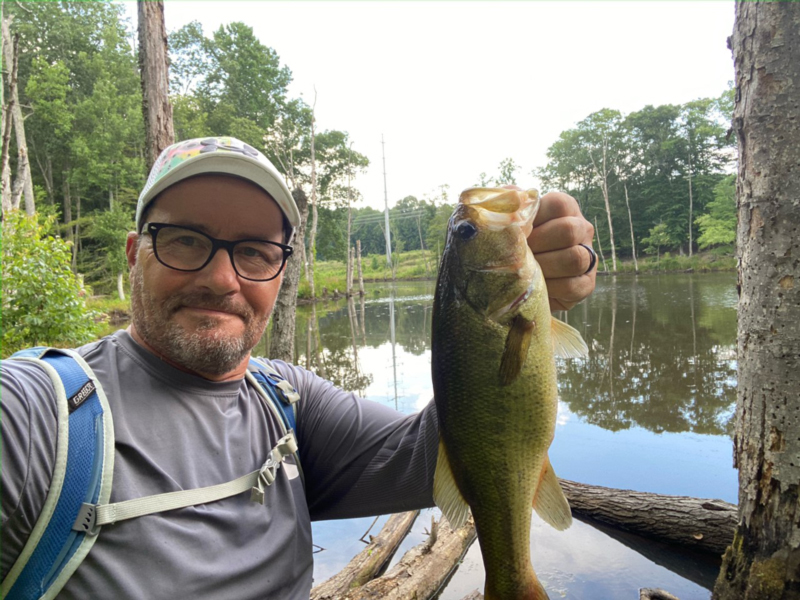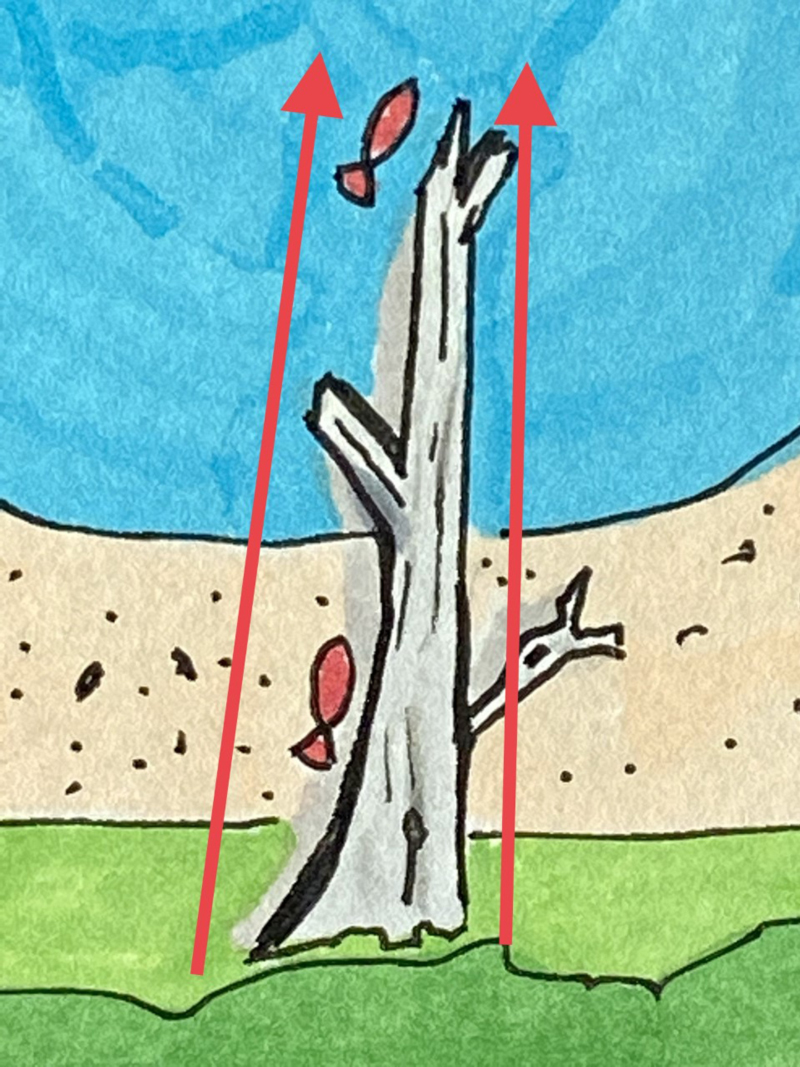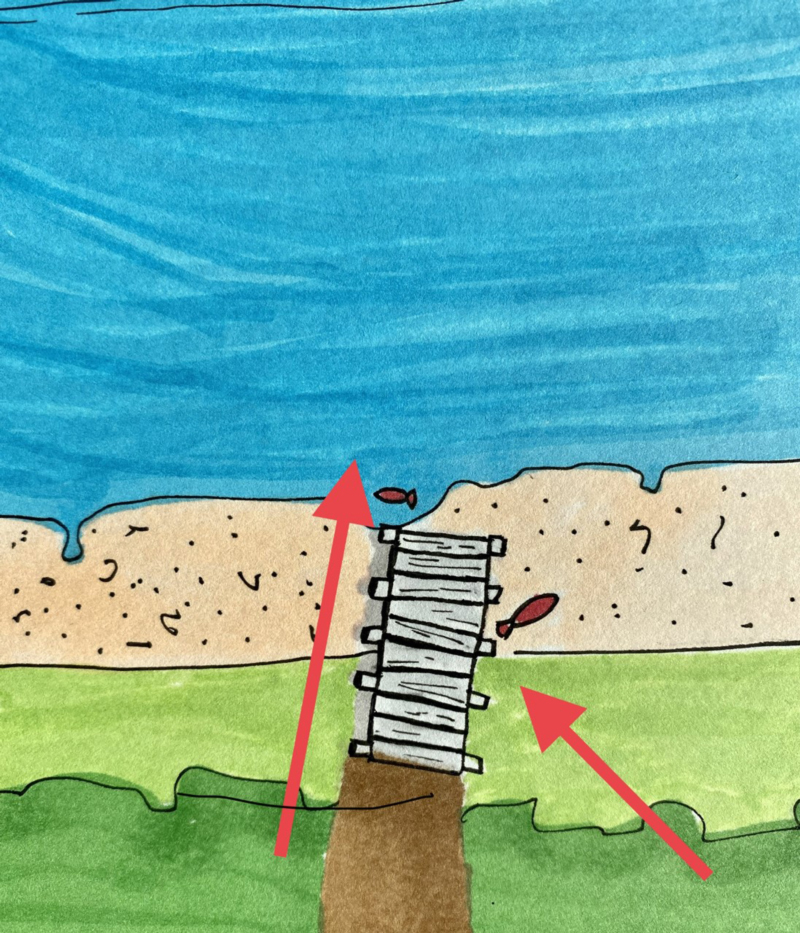My earliest memory of catching a largemouth bass is fishing from the shoreline on a small pond near my home when I was a 10-year-old living in Leavenworth, KS. I walked down to the pond carrying my Zebco 77, and found a topwater bait hanging in a bush near the waters’ edge. I tied on the red and yellow bait and took a few casts — then caught my first largemouth bass on a topwater bite! I was hooked for life, making countless trips back to the waters’ edge.

Throughout my childhood and early teens most of my fishing adventures were fishing from the shore, casting my bait out to where I imagined the bass to be waiting for my offerings. Over the years I learned a lot about reading the water from the shoreline. Trees that have fallen into the water, lily pads, sand, and gravel bottoms are a few of the places where you’ll find bass.
There are 10 different locations I look for bass while casting from the shoreline of a lake, pond, or river. First, I look for obvious structure like fallen trees, large rocks, and flooded timber. Lily pads, points of land, gravel bottoms, and changes in strata, are good to fish, too. There are manmade structures as well, like boat docks, riprap, and concrete structures. Let’s examine each from a beginner’s perspective.
- TREES When I see a tree lying in the water I do several things before taking the cast. I look at standing trees near the shoreline, note their height, and where the tree is lying in the water. I can estimate the distance it reaches into the water by looking at the other trees in the area. This helps me determine where I need to cast my bait to reach the trees’ underwater canopy. Baitfish will hide in the limbs of a tree, attracting bass that are feeding on them. Bass will also hide in the shade of the trunk of the tree or under it to ambush its prey. Wacky rigs, spinner baits, and jigs are all good choices for casting around fallen trees.

Fish will often hide right alongside — or even underneath of — of a tree lying in the water. -
OVERHANGS Trees and brush hanging over the water will cast shadows and provide a place out of the sun for fish, which can be very important especially during summer. Remember, fish don’t have eyelids so they need shade in shallow water to provide protection from sunlight as well as a break from the heat. Plus, trees, bushes, and grass along the shoreline attract insects. Another helpful tip with respect to overhanging trees: when I’m working a shoreline I look for pine trees, as they seem to attract a larger amount of insects. Insects fall into the water and attract smaller fish, like bluegill, which in turn attract feeding bass.
- POINTS When approaching points of land I look for the obvious items like fallen trees, stump fields, lily pads, and any other structure bass may be using to ambush prey. Points of land also provide a quick getaway to deeper water for safety. When feeding, bass often seek out a place to dart away so as to avoid other feeding bass while managing their meal. Along with the physical features, look at wind direction and, if there is any current, which direction the water is flowing. Fish will face into the current or into the direction the wind is coming from. As bait get pushed over a point bass simply have to rise up to eat, saving precious energy. When casting into the wind and working a bait back over the point, small spinner baits and Beetle Spins are often effective. Also try fan-casting shaky head jigs and Ned rigs, or other plastic worm rigs. Cast out and let the bait settle, then work the bait back and if you get bit make note of how far out the bite was. This gives some idea of how deep the fish are. Then take another cast out to that location and count down the bait by counting 1001, 1002, 1003, and so on. You may not know the exact depth, but you’ll learn that whatever depth it takes your lure “X” number of seconds to sink to bottom is where the fish are. Then you can concentrate your efforts in the same depth range at other locations around the lake. Always remember, when you find a pattern that results in catching fish, like counting down to a specific depth, stick with that pattern until it no longer proves effective. Points that drop off steeply or near channels will often hold bass. If you have access to topographic data for a lake it can be helpful to research those before you head out. Depending on depth, casting square billed or deep-diving crankbaits along a drop off is another good bet.

Points are natural fish-attracting hotspots, but you may have to probe differing sections and depths of a point to figure out where the fish are. - DAMS Earthen dams with riprap at their base are another feature that may hold fish. In winter the riprap heats up from the sun, which draws in the bait fish that attract bass. During the summer the water can be cooler due to its depth at the base of the dam (dams are normally the deepest spot in a man-made lake) or because of water flowing through a drainpipe or spillway. While fishing riprap I only use crankbaits, and I particularly like casting a crawfish-colored square-billed crankbait. I find that when using square-billed crankbaits I get fewer snags on the rocks. Square bills will bounce erratically off the rocks, too, which can trigger bites.
- TRANSITION ZONES It’s also good to target fish where the riprap ends and the natural shoreline starts. You would be surprised by how a simple change from rock to dirt, or for that matter any change in the strata, attracts fish. Casting a bait along the line of change or across it can generate a bite.
- ONCRETE STRUCTURES Concrete structures like spillways and bridge pilings are another good place to target fish. Fish will use the structure as an ambush point, and in the winter the structure heats up the surrounding water a few degrees, thanks to sunlight, and attracts fish. Casting a swimbait or a crankbait past it can generate a bite.
- SPILLWAY DISCHARGES The downstream side of a dam spillway usually holds a few fish, too. Where the water flows out there is normally a deeper pool. This water can be cooler, attracting fish. The water here will normally flow very quickly. Cast your bait up into the flowing water and let it drift down and back out into calmer water, all the while taking line in as the bait moves, keeping the line tight. Fish will face into the flow looking for bait to come to them. I like to use wacky rig, small spinner baits, and jigs in this situation.
- DOCKS AND PIERS Ponds and lakes that allow boating will normally have docks and piers. Casting plastic worms, swimbaits, small crankbaits, and spinner baits around and under them works well. Bass and other fish will use the structure for protection from the sun and/or predators. Docks and piers are often also situated near deep water, giving bass and other fish a place to hide and bolt into the deeper water to make a quick getaway. But when approaching a dock or pier always work your bait thoroughly around and under it before you venture out onto it. Any movement on the dock (including your footsteps) causes noise and vibration and could scare fish, stopping any potential bites from those that are close by.

Cast beyond and then retrieve parallel to piers; also try casting at an angle to them. Sometimes, skipping a lure underneath of a pier works well, too. Try all these tactics before stepping onto the pier, which will likely spook any fish hiding around it. - LILY PADS Another great spot to target bass from the shoreline is lily pad fields. Casting weedless topwater baits can generate a great bite. Baits like weedless frogs, weedless rigged flukes, or paddle tails work well. I like to start by casting along the edge of the lily pad field then work my bait back in a walk-the-dog pattern. If I can reach open water on the far side of the pads I will cast there too, then bring the bait to the pads. A lot of the bites will come from the leading edge of the pads. Bass will hide along them to dart out and ambush their prey. But don’t discount the blowup you may get as you move your bait across the pads and then drop it off the edges, too. Lily pads are translucent and as your bait moves across them their shadow can be seen from below. The vibration your bait generates as it moves across the water and the lily pads can be heard by bass also.
- STUMP FIELDS Casting around stump fields can be a blast. There are days that I have caught well over 30 bass casting a Ned rig into a stump field. Stumps provide shade, protection from predators, and forage for bass. Fishing square billed crankbaits, spinner baits, Ned rigs and jigs produces fish in this structure.
One last tip: any of these spots can be better accessed while wearing waders. Wearing waders will allow you to reach locations you wouldn’t otherwise be able to fish. Check out “Wade Fishing Tips” for more helpful information on how to put them to work.
Remember, a cast not taken is a fish not caught. Take the cast! I hope to see you out on the water or fishing from on the shoreline.
-By Eric Packard; all illustrations also by Eric Packard